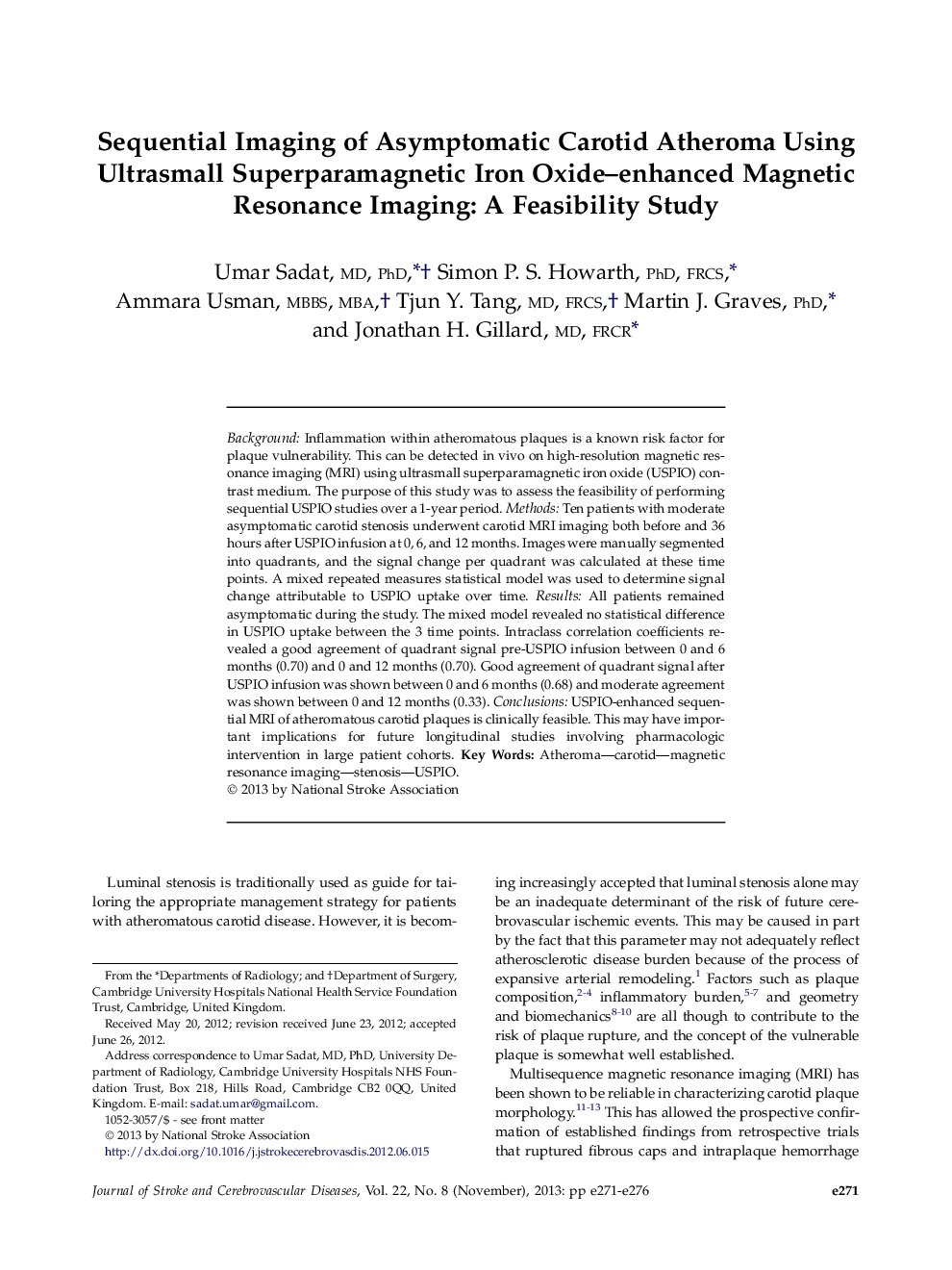| Article ID | Journal | Published Year | Pages | File Type |
|---|---|---|---|---|
| 2710645 | Journal of Stroke and Cerebrovascular Diseases | 2013 | 6 Pages |
BackgroundInflammation within atheromatous plaques is a known risk factor for plaque vulnerability. This can be detected in vivo on high-resolution magnetic resonance imaging (MRI) using ultrasmall superparamagnetic iron oxide (USPIO) contrast medium. The purpose of this study was to assess the feasibility of performing sequential USPIO studies over a 1-year period.MethodsTen patients with moderate asymptomatic carotid stenosis underwent carotid MRI imaging both before and 36 hours after USPIO infusion at 0, 6, and 12 months. Images were manually segmented into quadrants, and the signal change per quadrant was calculated at these time points. A mixed repeated measures statistical model was used to determine signal change attributable to USPIO uptake over time.ResultsAll patients remained asymptomatic during the study. The mixed model revealed no statistical difference in USPIO uptake between the 3 time points. Intraclass correlation coefficients revealed a good agreement of quadrant signal pre-USPIO infusion between 0 and 6 months (0.70) and 0 and 12 months (0.70). Good agreement of quadrant signal after USPIO infusion was shown between 0 and 6 months (0.68) and moderate agreement was shown between 0 and 12 months (0.33).ConclusionsUSPIO-enhanced sequential MRI of atheromatous carotid plaques is clinically feasible. This may have important implications for future longitudinal studies involving pharmacologic intervention in large patient cohorts.
